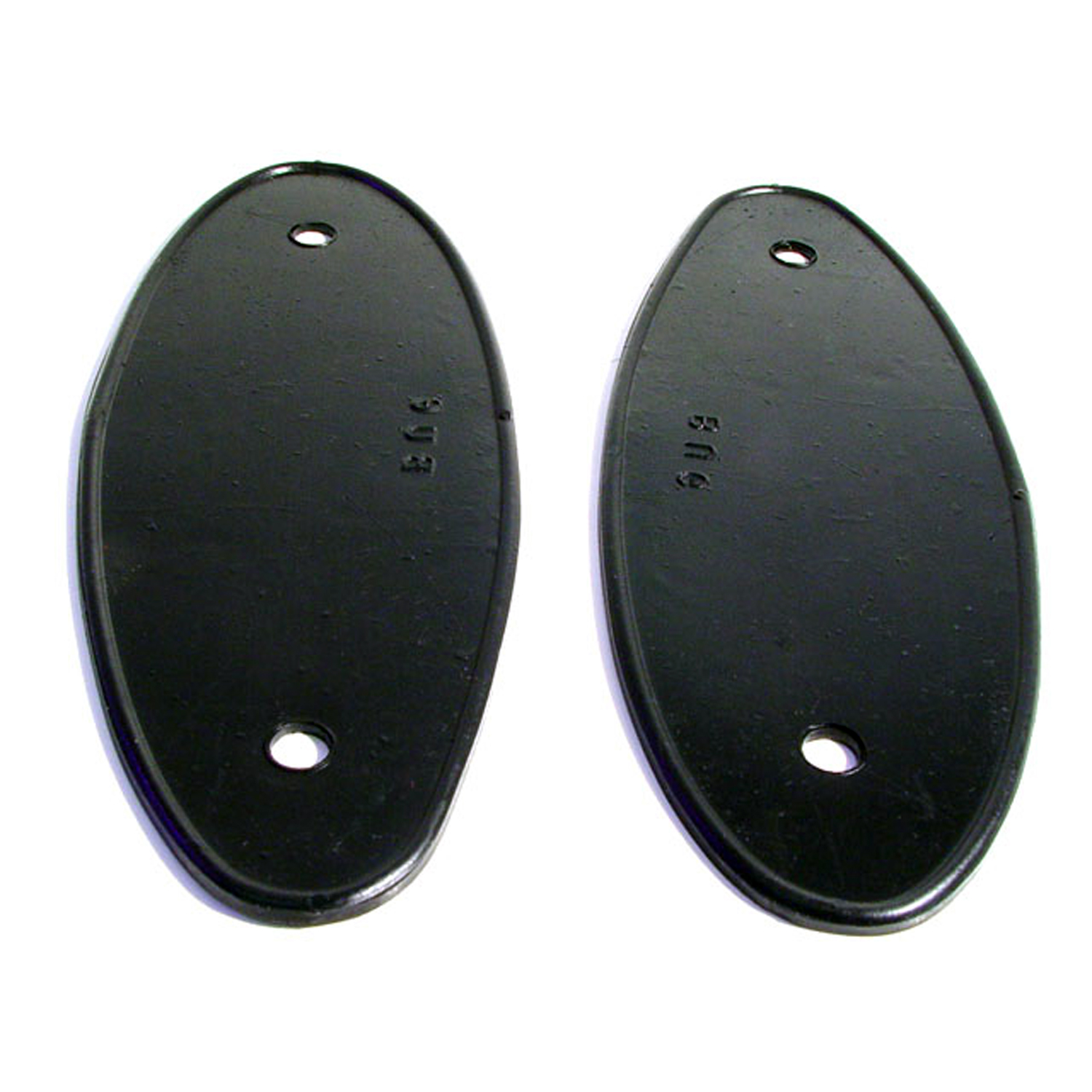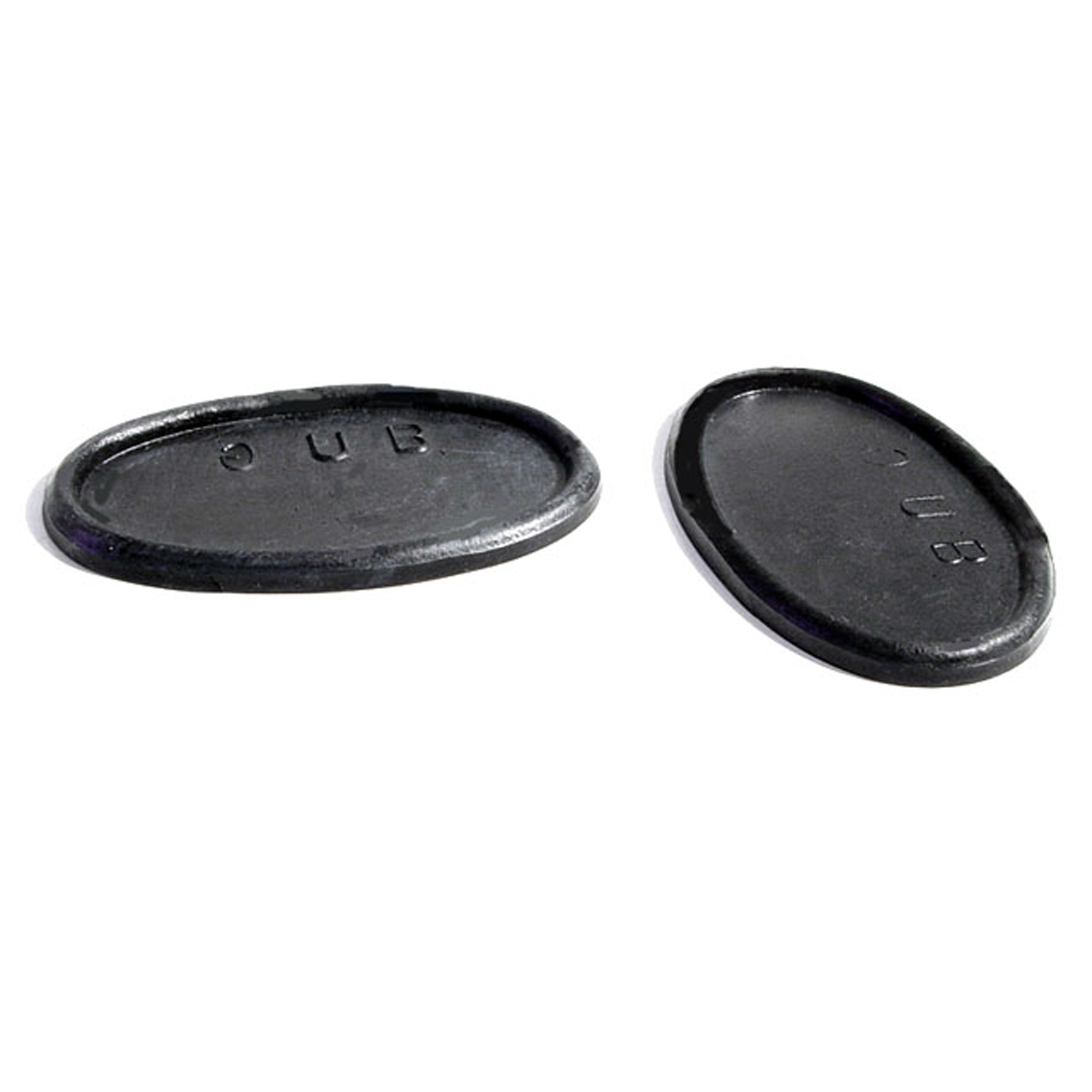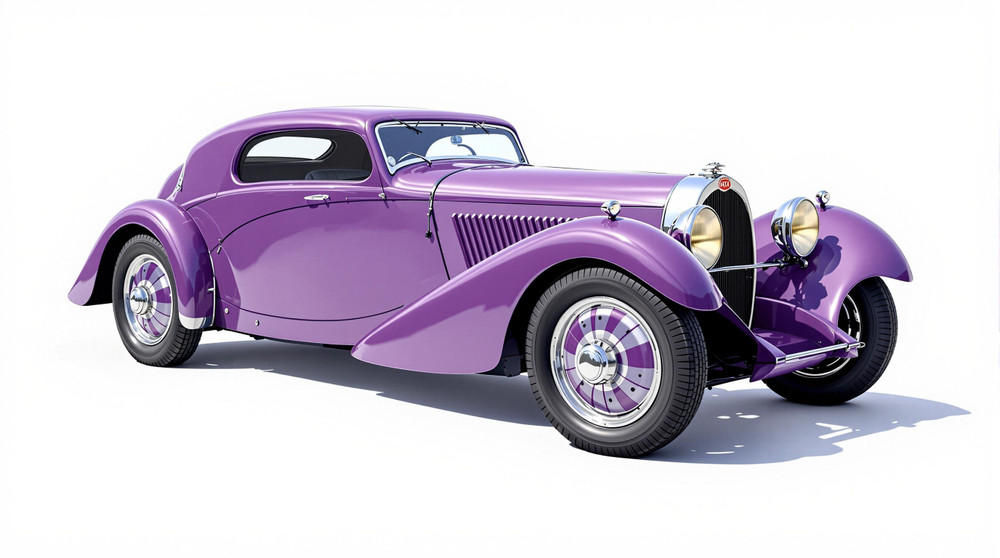Image of 1931 Bugatti Type 43, Note: These illustrations use artistic license and may differ from actual historical models.
Performance Metrics
Fundamental Metrics
Emotional Appeal
MMP Rating
| Engine Specifications | |
|---|---|
| Engine: | Straight-8 engine |
| Displacement: | 2.3 liters |
| Horsepower: | Estimated 120 horsepower |
| Torque: | Not available |
| Compression Ratio: | Not available |
| Ignition System: | Magneto ignition system |
| Cooling System: | Water-cooled |
| Performance Specifications | |
| 0-60 Time: | Not available |
| 1/4 Mile Time: | Not available |
| Top Speed: | 110 mph |
| Transmission and Drive | |
| Drive Type: | Rear-wheel drive |
| Transmission Type: | 4-speed manual |
| Fuel and Efficiency | |
| Fuel System Type: | Carburetor |
| MPG: | Not available |
| Dimensions and Brakes | |
| Brakes: | Mechanical drum brakes |
| Wheelbase: | 2.6 meters |
| Weight: | Estimated 900 kg |
Note: Specifications for classic cars are given to the best of our ability, considering the limited and variant data available.
A Glimpse into Automotive Royalty: The 1931 Bugatti Type 43
When elegance and performance coalesce into a single form, the result is often a Bugatti. The 1931 Bugatti Type 43 stands as a paragon of pre-war automotive excellence, a testament to the ingenuity and artistry of its creator, Ettore Bugatti. Born in an era where motor vehicles were rapidly evolving, the Type 43 was a beacon of innovation, speed, and luxury. Notably, it was one of the first road cars capable of exceeding 100 mph—a feat that cemented its place in automotive lore.
Design and Innovation
The Type 43's exterior is a symphony of curves and aerodynamic lines, its bodywork crafted with an artisan's touch. The front grille, shaped like a horse-collar and adorned with the unmistakable Bugatti emblem, is flanked by gracefully integrated headlights that seem to pierce the road ahead. Inside, occupants are enveloped in an opulent cabin where leather, wood, and metal converge to create an atmosphere of refined comfort. The quality of materials used speaks volumes about the car's grandeur during its time.
Technologically, the Type 43 was ahead of its contemporaries. It boasted a supercharged eight-cylinder engine derived from the illustrious Type 35B race car, making it a force to be reckoned with on both road and track. Color options were typically bespoke for Bugatti clientele, with rich blues being particularly popular among the discerning owners. As for body styles, the Grand Sport roadster variant stood out as an icon of its lineup.
Historical Significance
The impact of the Type 43 on automotive design cannot be overstated. It bridged the gap between high-performance racing machines and road-going tourers. Its engineering prowess influenced generations of sports cars that followed, setting new standards for what a luxury automobile could achieve in terms of speed and design.
Performance and Handling
The heart of the Type 43's performance lay in its supercharged 2.3-liter engine which propelled it to top speeds north of 100 mph—a remarkable achievement at the time. Acceleration was brisk, with the car capable of reaching 60 mph from a standstill in mere seconds. On winding roads or when encountering rough surfaces, the Type 43 maintained composure thanks to its advanced suspension setup for its era. Driving this machine was an auditory delight as well; the whine of the supercharger complemented by the throaty exhaust note created an exhilarating symphony.
Ownership Experience
The Type 43 was not just a showpiece; it was also used for spirited driving and even amateur racing by some owners. Maintenance required a skilled hand—after all, this was a precision-engineered thoroughbred—but many parts were shared with Bugatti's race cars, simplifying repairs somewhat. Reliability was as expected for a high-performance machine of its day: demanding but manageable for those dedicated enough to own such a marvel.
Fun Facts
Amongst its many accolades, the Type 43 held records for speed and endurance that stood for years. It graced the garages of royalty and celebrities alike and even today remains a coveted piece among collectors who cherish its lineage and pedigree.
Collector's Information
Today's value range for a genuine Type 43 can be astronomical due to its rarity and historical significance—often fetching millions at auction if one becomes available. With only an estimated 160 units produced during its production run from 1927 to 1932, finding one on the market is akin to discovering hidden treasure.
Conclusion
The legacy of the 1931 Bugatti Type 43 is indelibly etched into automotive history. It stands as a monument to performance-oriented luxury from an era when cars began to transcend their utilitarian roots and become objects of desire and dreams. Owning such a vehicle is not merely about possession; it's about stewardship over a piece of history that continues to inspire awe nearly a century later.
1931 Bugatti Type 43 Catalog of Parts
 1931 Bugatti Type 43 Headlight Pads. 3" wide X 8-1/8" long. Pair-MP 337-AHeadlight Pads. 3" wide X 8-1/8" long. Pair
1931 Bugatti Type 43 Headlight Pads. 3" wide X 8-1/8" long. Pair-MP 337-AHeadlight Pads. 3" wide X 8-1/8" long. Pair 1931 Bugatti Type 43 Door Handle Pads. 1-3/8" wide X 2-1/4" long. Pair-MP 337-BDoor Handle Pads. 1-3/8" wide X 2-1/4" long. Pair
1931 Bugatti Type 43 Door Handle Pads. 1-3/8" wide X 2-1/4" long. Pair-MP 337-BDoor Handle Pads. 1-3/8" wide X 2-1/4" long. PairWhy Choose Metro?
For over 100 years, Metro Moulded Parts has been the pinnacle of quality in classic car restoration parts. Our commitment to precision and authenticity in every component ensures a perfect fit and an OEM-level appearance.
- Expert Craftsmanship & Quality: Each part is a testament to our dedication to reliability and perfection, crafted from original designs and thoroughly tested.
- Advanced Technology: We use cutting-edge techniques to create flawless, long-lasting parts that surpass others in performance.
- SuperSoft Sponge – The Ultimate Door Seal: Not only are our door seals 30% softer than competitors', but they're also guaranteed to never leak. They effectively reduce wind and road noise, enhancing your classic car's comfort and driving experience.
- Proudly American: Our parts are a product of American craftsmanship, made in the USA with a spirit of excellence and heritage.
- Unrivaled Warranty: We back our products with a 30-year industry-leading warranty, a testament to our confidence in their quality.
Join us in preserving the legacy of classic cars with parts that are crafted for perfection, not just made.

